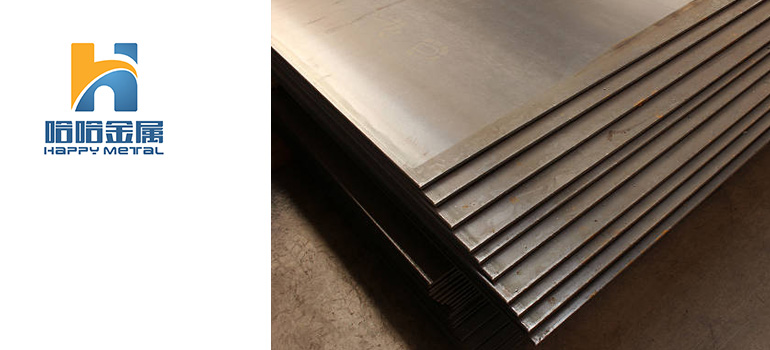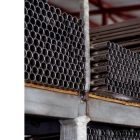Summary:
Al Zn Mg Steel: Revolutionizing Construction and Manufacturing
What is Al Zn Mg Steel?
Composition and Properties of Al Zn Mg Steel
The Advantages of Al Zn Mg Steel
Al Zn Mg Steel in Construction
Al Zn Mg Steel in Manufacturing
What is Al Zn Mg Steel?
Al Zn Mg steel, also known as aluminum-zinc-magnesium alloy steel, is an advanced material renowned for its exceptional strength, durability, and versatility. This alloy is created by blending precise proportions of aluminum, zinc, and magnesium, resulting in a metal that exhibits superior performance characteristics compared to traditional steel and other alloys.
Aluminum, the primary component of Al Zn Mg steel, contributes to its lightweight nature, making it an ideal choice for applications where weight reduction is critical without compromising structural integrity. Zinc enhances the alloy’s corrosion resistance, protecting it from rust and degradation even in harsh environments. Meanwhile, magnesium enhances the overall strength and toughness of the material, enabling it to withstand high-stress conditions.
Al Zn Mg steel finds widespread use across various industries, including construction, manufacturing, automotive, aerospace, and marine sectors. Its unique combination of properties makes it suitable for a diverse range of applications, from building structures and infrastructure to producing components for machinery, vehicles, and marine vessels.
In essence, Al Zn Mg steel represents a significant advancement in material science, offering engineers and manufacturers a highly versatile and durable solution for addressing complex engineering challenges while maximizing performance and efficiency.
Composition and Properties of Al Zn Mg Steel
The composition and properties of Al Zn Mg steel are crucial factors that define its performance and suitability for various applications. Let’s delve deeper into these aspects:
Composition:
Al Zn Mg steel is primarily composed of three main elements:
Aluminum (Al): Aluminum forms the base of the alloy and constitutes the largest proportion of its composition. It provides Al Zn Mg steel with its characteristic lightweight properties, making it an excellent choice for applications where weight reduction is essential.
Zinc (Zn): Zinc is another essential component of Al Zn Mg steel. It serves as a sacrificial anode, providing corrosion protection to the alloy. Zinc’s corrosion-resistant properties help prevent rust and degradation, thereby extending the lifespan of structures and components made from Al Zn Mg steel.
Magnesium (Mg): Magnesium plays a crucial role in enhancing the strength and toughness of Al Zn Mg steel. It acts as a strengthening agent, contributing to the alloy’s overall durability and resilience. Magnesium also improves the alloy’s machinability and weldability, facilitating ease of fabrication.
Properties:
The unique composition of Al Zn Mg steel results in a range of desirable properties, including:
High Strength: Al Zn Mg steel exhibits exceptional strength, surpassing that of traditional steel alloys. Its high strength-to-weight ratio makes it an ideal choice for structural applications where strength and durability are paramount.
Lightweight: Thanks to its aluminum content, Al Zn Mg steel is significantly lighter than conventional steel. This lightweight nature makes it suitable for applications where reducing the overall weight is essential, such as in aerospace and automotive industries.
Corrosion Resistance: The presence of zinc in Al Zn Mg steel provides excellent corrosion resistance, protecting the alloy from rust and deterioration even in corrosive environments. This property enhances the longevity and durability of structures and components made from Al Zn Mg steel.
Machinability and Formability: Al Zn Mg steel exhibits good machinability and formability, allowing for ease of fabrication and shaping into various complex geometries. This property enables manufacturers to create intricate components with precision and efficiency.
Recyclability: Like aluminum and steel, Al Zn Mg steel is highly recyclable, making it an environmentally sustainable choice. Its recyclability contributes to the conservation of resources and reduction of waste in the manufacturing process.
Overall, the composition and properties of Al Zn Mg steel make it a versatile and highly desirable material for a wide range of applications across industries, offering superior performance, durability, and sustainability.
The Advantages of Al Zn Mg Steel
The advantages of Al Zn Mg steel are manifold, stemming from its unique composition and exceptional properties. Let’s explore these benefits in detail:
Superior Strength and Durability:
Al Zn Mg steel exhibits remarkable strength, surpassing that of traditional steel alloys. Its high tensile strength and toughness make it an ideal choice for applications requiring structural integrity and resilience. Whether used in construction, manufacturing, or engineering projects, Al Zn Mg steel provides long-lasting performance even under demanding conditions.
Enhanced Corrosion Resistance:
One of the standout features of Al Zn Mg steel is its excellent corrosion resistance. The presence of zinc in the alloy acts as a protective barrier against rust and degradation, ensuring longevity and durability in various environments, including marine, industrial, and coastal settings. This corrosion resistance minimizes maintenance requirements and prolongs the lifespan of structures and components made from Al Zn Mg steel.
Lightweight Design for Efficiency:
Thanks to its aluminum content, Al Zn Mg steel offers significant weight savings compared to conventional steel. Its lightweight nature not only reduces transportation and handling costs but also facilitates ease of installation and assembly. This advantage is particularly beneficial in industries such as aerospace, automotive, and construction, where minimizing weight without compromising strength is essential for enhancing efficiency and performance.
Versatility in Applications:
Al Zn Mg steel’s unique combination of properties makes it highly versatile, catering to a wide range of applications across industries. Whether used in building structures, automotive components, machinery, or consumer products, this alloy offers exceptional performance and reliability. Its versatility enables engineers and manufacturers to innovate and explore new design possibilities, pushing the boundaries of what’s achievable in their respective fields.
Sustainable Solution:
In addition to its performance benefits, Al Zn Mg steel is also environmentally sustainable. Its recyclability makes it a preferred choice for green building projects and eco-conscious manufacturing processes. By incorporating recycled content and promoting circular economy principles, Al Zn Mg steel contributes to resource conservation and reduces the carbon footprint of various industries.
Cost-Effectiveness:
Despite its advanced properties, Al Zn Mg steel remains competitively priced compared to alternative materials. Its long lifespan, minimal maintenance requirements, and energy-efficient manufacturing processes contribute to cost savings over the lifecycle of projects and products. This cost-effectiveness makes Al Zn Mg steel an attractive investment for businesses seeking to optimize performance while minimizing operational expenses.
In summary, the advantages of Al Zn Mg steel encompass strength, durability, corrosion resistance, lightweight design, versatility, sustainability, and cost-effectiveness, making it a preferred choice for a wide range of applications in today’s dynamic industrial landscape.
Al Zn Mg Steel in Construction
Al Zn Mg steel plays a pivotal role in revolutionizing the construction industry, offering a myriad of benefits and opportunities for innovation. Let’s delve into how this advanced alloy is transforming the landscape of modern construction:
Structural Applications and Innovations:
Al Zn Mg steel’s exceptional strength-to-weight ratio makes it an ideal choice for structural components in buildings, bridges, and infrastructure projects. Its superior mechanical properties allow for the design of lightweight yet robust structures that can withstand high loads and adverse environmental conditions. From high-rise skyscrapers to long-span bridges, Al Zn Mg steel enables architects and engineers to push the boundaries of design possibilities, creating iconic structures that redefine the skyline.
Lightweight Design for Tall Buildings:
In tall building construction, weight reduction is paramount to minimize material usage and optimize structural performance. Al Zn Mg steel’s lightweight nature allows for the construction of slender and efficient building systems, reducing the overall load on foundations and supporting structures. This advantage not only enhances structural stability but also facilitates faster construction times and cost savings.
Prefabrication and Modular Construction:
The versatility and ease of fabrication of Al Zn Mg steel make it well-suited for prefabricated and modular construction methods. Components such as beams, columns, and panels can be manufactured off-site with precision and efficiency, then transported to the construction site for assembly. This approach reduces on-site labor and construction time, accelerates project schedules, and minimizes disruptions to surrounding communities.
Sustainable Solutions for Modern Challenges:
In an era of increasing environmental awareness, sustainability is a key consideration in construction projects. Al Zn Mg steel offers several sustainable advantages, including recyclability, energy efficiency, and resource conservation. Its recyclability enables the reuse of materials, reducing waste and carbon emissions associated with traditional construction methods. Additionally, the lightweight design of Al Zn Mg steel structures contributes to energy savings throughout the building’s lifecycle, from transportation to operation.
Green Building Certifications:
Al Zn Mg steel’s sustainable attributes align with green building standards and certifications, such as LEED (Leadership in Energy and Environmental Design) and BREEAM (Building Research Establishment Environmental Assessment Method). Projects utilizing Al Zn Mg steel can earn credits for factors such as recycled content, regional materials, and energy efficiency, promoting environmental stewardship and enhancing market competitiveness.
Al Zn Mg Steel in Manufacturing
Al Zn Mg steel is not only transforming the construction industry but also revolutionizing manufacturing processes across various sectors. Let’s explore how this advanced alloy is reshaping the landscape of modern manufacturing:
Industrial Applications and Machinability:
Al Zn Mg steel’s exceptional strength, durability, and machinability make it an ideal choice for a wide range of industrial applications. From automotive components to machinery parts, manufacturers rely on Al Zn Mg steel for its versatility and reliability in demanding environments. Its ability to be precision-machined allows for the production of intricate and complex shapes with tight tolerances, ensuring optimal performance and functionality in end products.
Automotive Manufacturing:
In the automotive industry, Al Zn Mg steel is increasingly being used in the production of lightweight and fuel-efficient vehicles. Its high strength-to-weight ratio allows for the design of structurally sound yet lightweight body panels, chassis components, and engine parts. By reducing vehicle weight, Al Zn Mg steel contributes to improved fuel economy, lower emissions, and enhanced driving dynamics, meeting the demands of today’s eco-conscious consumers.
Machinery and Equipment:
Al Zn Mg steel finds widespread use in the manufacturing of machinery and equipment for various industries, including aerospace, marine, and industrial sectors. Its superior mechanical properties, such as strength, durability, and corrosion resistance, ensure reliable performance in critical applications. Whether used in aerospace components, marine structures, or industrial machinery, Al Zn Mg steel delivers unmatched reliability and longevity, maximizing operational efficiency and productivity.
Production Processes and Efficiency:
The production processes involved in manufacturing Al Zn Mg steel are highly efficient and cost-effective, thanks to the alloy’s favorable properties and ease of fabrication. Advanced manufacturing techniques, such as hot rolling, cold forming, and extrusion, allow for the mass production of Al Zn Mg steel components with minimal material waste and high precision. These streamlined processes enable manufacturers to meet tight deadlines, reduce lead times, and optimize production output, ultimately enhancing competitiveness in the global marketplace.
Precision Engineering and Quality Control:
In manufacturing, precision engineering and quality control are paramount to ensuring the performance and reliability of end products. Al Zn Mg steel’s uniform composition and consistent mechanical properties enable precise machining and fabrication processes, resulting in parts and components with tight dimensional tolerances and superior surface finish. Stringent quality control measures further guarantee the integrity and reliability of Al Zn Mg steel products, meeting industry standards and customer expectations.
Cost-Effectiveness and Market Impact:
Despite its advanced properties, Al Zn Mg steel remains cost-effective compared to alternative materials, offering manufacturers a competitive advantage in terms of production costs and overall project economics. Its long lifespan, minimal maintenance requirements, and recyclability contribute to lower lifecycle costs and enhanced sustainability, aligning with market trends and regulatory requirements. As a result, Al Zn Mg steel continues to gain traction in the global manufacturing sector, driving innovation and efficiency across diverse industries.
In summary, Al Zn Mg steel's exceptional properties and versatile applications make it a preferred choice for manufacturers seeking high-performance, cost-effective solutions. Its impact on manufacturing processes extends beyond individual industries, shaping the future of production and driving sustainable growth in the global economy.




